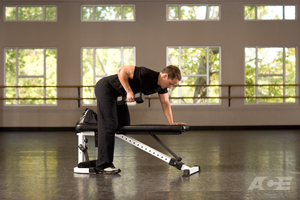Some people would think this was a post against running.
http://dnfitness.wordpress.com/2013/12/05/for-people-who-like-to-run-and-do-cardio-workouts/I know, however that David and I are on the same page here. Personally I like running workouts. Getting outside and moving, running down a country road, or better still, a trail in the woods for two, three or more hours for me stops feeling like a workout and more like a communion with my body and the world around me. I love ro run, if I didn't I wouldn't be training for a 50K trail race.
Soon after I started running I figured out (by getting injured) that a good way to not get injured running is to balance things out and do some workouts other than just running.
Running provides a lot of work for certain muscles, but not others. So with lots of running the prime movers for hip flexion and extension can outlast the muscles that stabilize your hips and lower back. The result is that as you tire, running form starts to break down, and injury becomes more and more likely. So strength training stabilizers, not just in the hips and core but throughout the body, can reduce your chance of injury.
Also, your running posture affects your running economy. If you start slouching forward it is harder to get enough oxygen to your muscles and you become less and less "fuel efficient" leading to sooner and greater fatigue.
Running, while considered an aerobic exercise, actually uses three energy systems, the higher the intensity (the harder you are running), the greater percentage of energy coming from anaerobic systems. So training the anaerobic systems as well as the aerobic improves running economy and decreases fatigue.
Heavy lifting teaches the body to recruit more muscle fibers and to recruit them more efficiently which puts more power in each stride improving economy and performance.
Strength training of the "I pick things up and put them down," variety are extremely important to running economy, injury prevention, and running speed. The studies on this keep rolling in. A friend of mine was told by Alberto Salazar, one of the top running coaches ever, to lift heavy.
One more thing on strength training and running. I had a runner do my strength training for runners course. After 8 weeks of progressive training she ran a personal best in three different distances over 4 weekends. She took 12 minutes off her half marathon PR, and nocked 2 minutes off her 5K best which was only about 2 months earlier.
So runners, whatever your running goals, not getting injured, running longer, running easier, or running faster, remember to lift things up and put them down.




